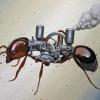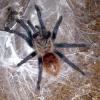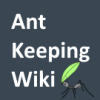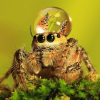http://www.formicult...-and-technique/
Retroman wrote
"Now, what not to do:
- Don't give them honey, fructose or sweets. They do not encounter any of this in the wild and can easily subsist and thrive on seeds and insect parts."
I really like his approach, but yesterday I for curiosity I gave some pollen pellets to P. Californicus and they had no isses collecting them and bringing them inside.
Also
https://en.wikipedia...ex_occidentalis
"Workers harvest seeds and pollen directly from plants and gather fallen seeds."
P.rugosus and P. barbatus also collected them.
My issue right now, is to know, if pollen does them good or not? even if accepted?
Like Messor, they accept insects, but studies show that in nature they are only 2% of their diet, and those colonies with high protein diets have their workers life span cut down drastically.























